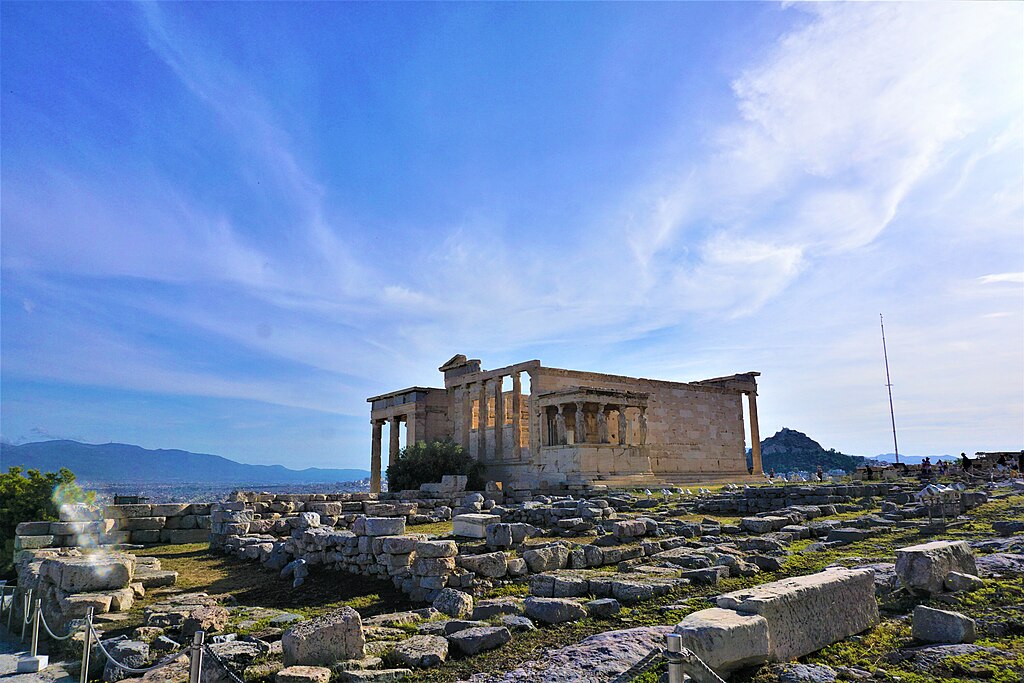“The Defeat of the Floating Batteries at Gibraltar” by John Singleton Copley from 1791, depicts the defeat of the floating batteries at Gibraltar during the Great Siege of Gibraltar.
The British Governor of Gibraltar is shown on horseback, pointing to the rescue of the defeated Spanish sailors.
The Great Siege of Gibraltar was an unsuccessful attempt by Spain and France to capture Gibraltar from the British during the War of American Independence.
The painting is based on an attack that took place in Gibraltar in 1782 when the Spanish formulated a secret weapon known as the Floating Batteries.
Designed to fire on Gibraltar at close quarters with deadly accuracy, floating batteries were built of 1 meter (3 ft) wide timbers packed with layers of wet sand, and were considered fire-proof and unsinkable.
The British used a heated shot to attack. These were pre-heated to furnace temperatures before being fired. Many were doused, but some of the fiery shots lay smoldering in the bowels of the enemy ship.
These lay burning into the wood, which eventually caused an inferno on the Floating Batteries.
The Defeat of the Floating Batteries at Gibraltar depicts Governor-General George Augustus Eliott, riding to the edge of the battlements to direct the rescue of the defeated Spanish sailors by the British.
Great Siege of Gibraltar
The British garrison was blockaded in 1779, initially by the Spanish. The blockade failed because two relief convoys entered successfully in 1780 and again in 1781, despite the presence of the Spanish fleets.
The same year, a significant assault was planned by the Spanish, but the British garrison destroyed much of the Spanish forward batteries. The siege was going nowhere with the Spanish failures, so French forces reinforced the siege in early 1782.
After a lull in the siege, during which the Spanish and French force gathered more guns, ships, and troops, a “Grand Assault” was launched.
This assault involved 60,000 men, 49 ships of the line, and ten specially designed, newly invented floating batteries, against the 5,000 British defenders.
The assault was a disastrous failure, resulting in substantial losses for the Spanish and French allies.
The siege then settled down again to more of a blockade, but the final defeat for the Spanish and French came when a crucial British relief convoy slipped through the blockading fleet.
The siege was finally lifted in 1783, which was a decisive victory for the British forces. The Siege of Gibraltar was the most significant action fought during this period in terms of military participants.
At three years and seven months, it was one of the longest sieges in history.
John Singleton Copley
John Singleton Copley (1738 – 1815) was an Anglo-American painter, active in both colonial America and England. Born in Boston, Massachusetts, he is famous for his portrait paintings of wealthy and influential figures in colonial New England.
His portraits were innovative in their tendency to portray artifacts relating to these individuals’ lives.
Copley sailed in 1774 for London, where he connected with Benjamin West, another American born painter who together created a new kind of history painting, one with modern and current subjects.
Copley also met Sir Joshua Reynolds, and between 1776 and 1815, he sent forty-three paintings to exhibitions of the Royal Academy, of which he was elected an associate member. His election to full membership occurred in 1783.
Copley was the greatest and most influential painter in colonial America, producing about 350 works of art. Boston’s Copley Square and Copley Plaza bear his name, as do Copley Township, Summit County, Ohio, and Copley crater on Mercury.
A 5-cent stamp commemorating John Singleton Copley was issued by the U.S. Postal Service in 1965, the 150th anniversary of his death.
The Defeat of the Floating Batteries at Gibraltar
- Title: The Defeat of the Floating Batteries at Gibraltar
- Alternative: The Siege of Gibraltar, The Siege, and Relief of Gibraltar or The Repulse of the Floating Batteries at Gibraltar
- Artist: John Singleton Copley
- Date: 1783–1791
- Medium: Oil on canvas
- Dimensions: 544 cm × 754 cm (214 in × 297 in)
- Type: History Painting
- Museum: Guildhall Art Gallery, London
John Singleton Copley
- Artist: John Singleton Copley
- Born: 1738 – Boston, Province of Massachusetts Bay, British America
- Died: 1815 (aged 77)- London, United Kingdom
- Nationality: British and American
- Notable works:
- The Defeat of the Floating Batteries at Gibraltar
- Watson and the Shark
- The Death of Major Peirson, 6 January 1781
The Art of John Singleton Copley
Explore London’s Museums and Heritage Sites
- The British Museum
- The National Gallery, London
- Tate Britain
- The Wallace Collection
- The Victoria and Albert Museum
- Queen’s Gallery, Buckingham Palace
- Courtauld Gallery
- Tate Modern, London
- Science Museum, London
- National Portrait Gallery, London
- Natural History Museum
- Charles Dickens Museum
- Hampton Court Palace
- Sherlock Holmes Museum
- British Library
- Imperial War Museum
- Churchill War Rooms
- Florence Nightingale Museum
- Foundling Museum
- Grant Museum of Zoology and Comparative Anatomy
- Cutty Sark, Royal Museums Greenwich
- National Maritime Museum, Greenwich
- Old Royal Naval College, Greenwich
- Queen’s House, Greenwich
- Royal Observatory, Greenwich
- Guildhall Art Gallery, London
History of Gibraltar
~~~
“It is not in the stars to hold our destiny but in ourselves.”
– William Shakespeare
~~~
Photo Credit: 1) [Public domain, GFDL (gnu.org/copyleft/fdl.html) or CC-BY-SA-3.0 (creativecommons.org/licenses/by-sa/3.0/)], via Wikimedia Commons
Popular this Week








 Sponsor your Favorite Page
Sponsor your Favorite Page SEARCH Search for: Search Follow UsJoin – The JOM Membership Program
Sponsor a Masterpiece with YOUR NAME CHOICE for $5
Share this:
- Tweet
